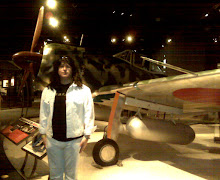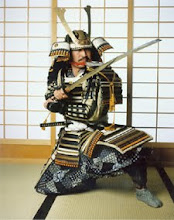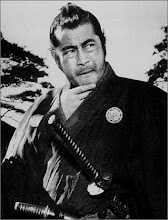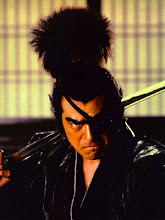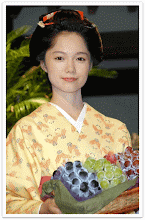As I go through my father’s things in the aftermath of his death, I came across a small book about the town we had lived in during the 1970’s, that town being Oxnard California. So what is so special about Oxnard in relation to American Mishima? Aside from it being the birthplace of our illustrated book
Ichiro Dreams In Color, it was the home to a thriving Japanese American Community before World War II and remains such today. But as most people know, what happend during the war left a big mark on this community. And so having made this discovery, we choose to share this important piece of the Nisei story here.

Growing up sixty miles north of Los Angeles in the sleepy sea side community on California’s Gold Coast, we have always been aware of the Nisei presence there. From Mrs. Kato who scolded us in 1st Grade for being ungracious kids who didn’t suffer the internment camps as she did to the many Japanese owned farms that dotted the landscape. But what eluded us until now was the truth and that being the raw details and a sense of the true history of that community's hardships. As a child I often would pass by an old abandoned Japanese Cemetery overgrown with Ivy and wondered what really happened during those dark years following FDR’s Executive Order 9066. You see, we didn't have a Japanese American National Museum back then like we do today. You couldn't find more than four sentences in a school history book much less any sense of the degree of social injustice these people suffered. It wasn't something anyone wanted to talk about much less cared for among non-Nikkei peoples some 25 years after the war's end with lingering feelings of resentment towards Japanese people for the bombing of Pearl Harbor still running high in a town flanked by two US Naval bases. But as kids, we were curious to know what was it that the adults were not telling us past the sugar coated version of how we won the war and how they justified things. Had it not been for Mrs. Kato back at Ramona Elementary School, we would have likely never known about the forced relocation of Japanese Americans until we were adults. Well thanks to Author Jeffrey Wayne Maulhardt’s “Images of America - Oxnard 1941-2004,” a clearer story of what took place there emerges.

It is often said two wrongs don't make a right. But back in the days after the outbreak of war, that didn't seem to matter. Wartime hysteria and fears of a Japanese Mainland Invasion while improbable gripped America with fear and cultural distrust of its own citizens of Japanese Ancestry. In February 1942, there were approximately 343 residents of Japanese ancestry living in Ventura County, the majority of them farmers whose farms comprised over 10% of the farmland in the Oxnard plain. It is said they exclusively grew cabbage, cauliflower, celery, cucumbers, and bell peppers. But three months after the outbreak of war with Japan, the Nisei community was forced to leave Oxnard for far away camps such as the one at Gila Arizona in the above photo. And while many Japanese American communities didn’t survive the war, many like Moriwaki family returned and rebuilt.

In 1970, one such former internee by the name of Neo Takasugi went on to become Mayor of Oxnard and later on a California Assemblyman. How’s that for perseverance! American Mishima applauds Author Jeffrey Wayne Maulhardt for both his research and preservation of this piece of Japanese American History.
While this book does not spend too many pages on the Japanese American Community, it is a noteworthy addition we felt worth mentioning here.
To buy a copy of Images of America - Oxnard 1941-2004,
Please Enjoy!
To learn more about the forced internment of Japanese Americans,
 While it wasn't our intention to scare anyone with our provocative questions, we did walk away with a better grasp of how Noh Performers embody such expression through musical chants and rhythmic movements. This is accomplished through their dance as such demonstrated by Mr. Udaka who demonstrated four sample play pieces including the famous "Death of a Samurai" all without masks and with him doing the accompanying chants normally reserved for the musicians that provide the music during a Noh Performance. He danced with such precise single Zen like focus achieving the conveyed implications of the drama which dramatically unfolded like the gilded folding fans used for props, one could see the intensity of the play's lasting impressions of this ancient theater that where only the dancer is on stage. As best explained by Mr. Udaka: "The best I can compare Noh to is that of the modern day experience many people have had searching for the television remote. You will focus on nothing else until you find that remote. That is what it is like to be a Noh Performer."
While it wasn't our intention to scare anyone with our provocative questions, we did walk away with a better grasp of how Noh Performers embody such expression through musical chants and rhythmic movements. This is accomplished through their dance as such demonstrated by Mr. Udaka who demonstrated four sample play pieces including the famous "Death of a Samurai" all without masks and with him doing the accompanying chants normally reserved for the musicians that provide the music during a Noh Performance. He danced with such precise single Zen like focus achieving the conveyed implications of the drama which dramatically unfolded like the gilded folding fans used for props, one could see the intensity of the play's lasting impressions of this ancient theater that where only the dancer is on stage. As best explained by Mr. Udaka: "The best I can compare Noh to is that of the modern day experience many people have had searching for the television remote. You will focus on nothing else until you find that remote. That is what it is like to be a Noh Performer." 